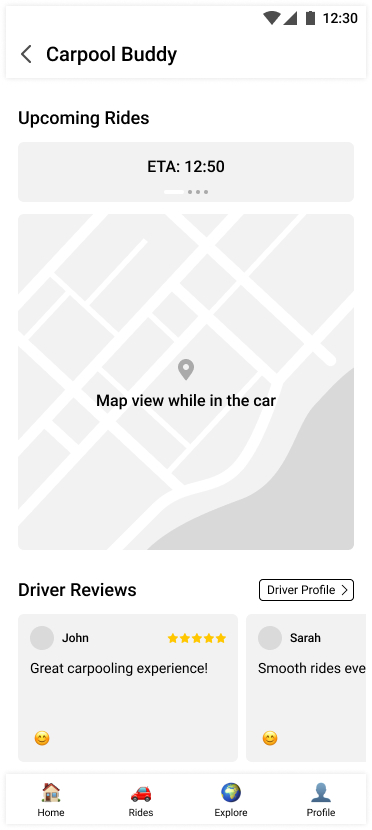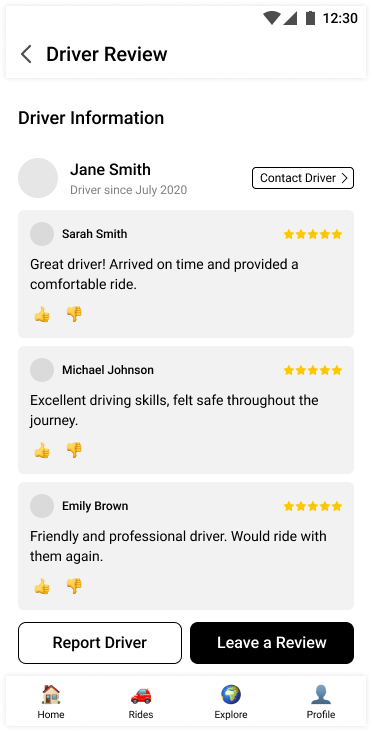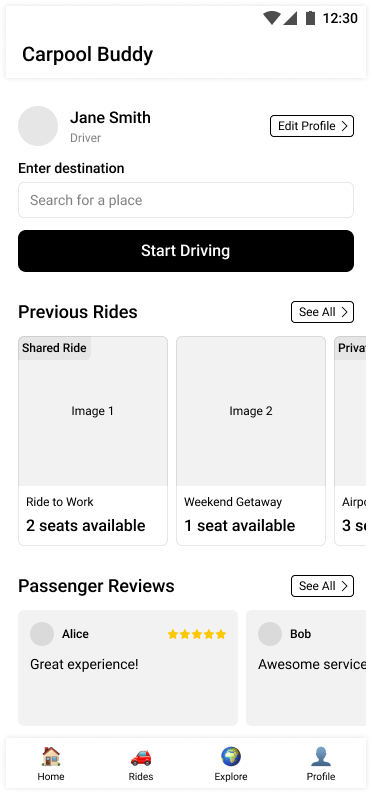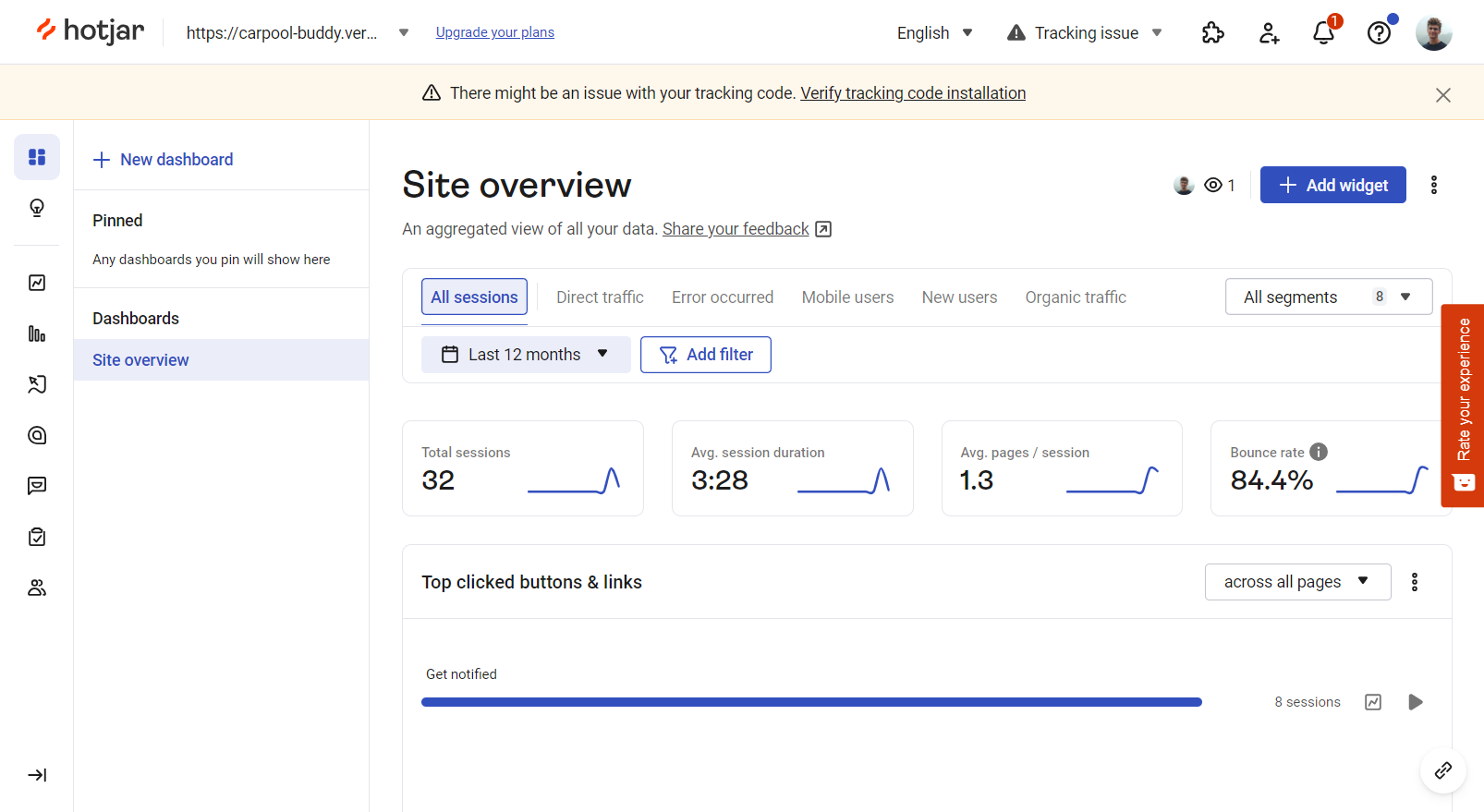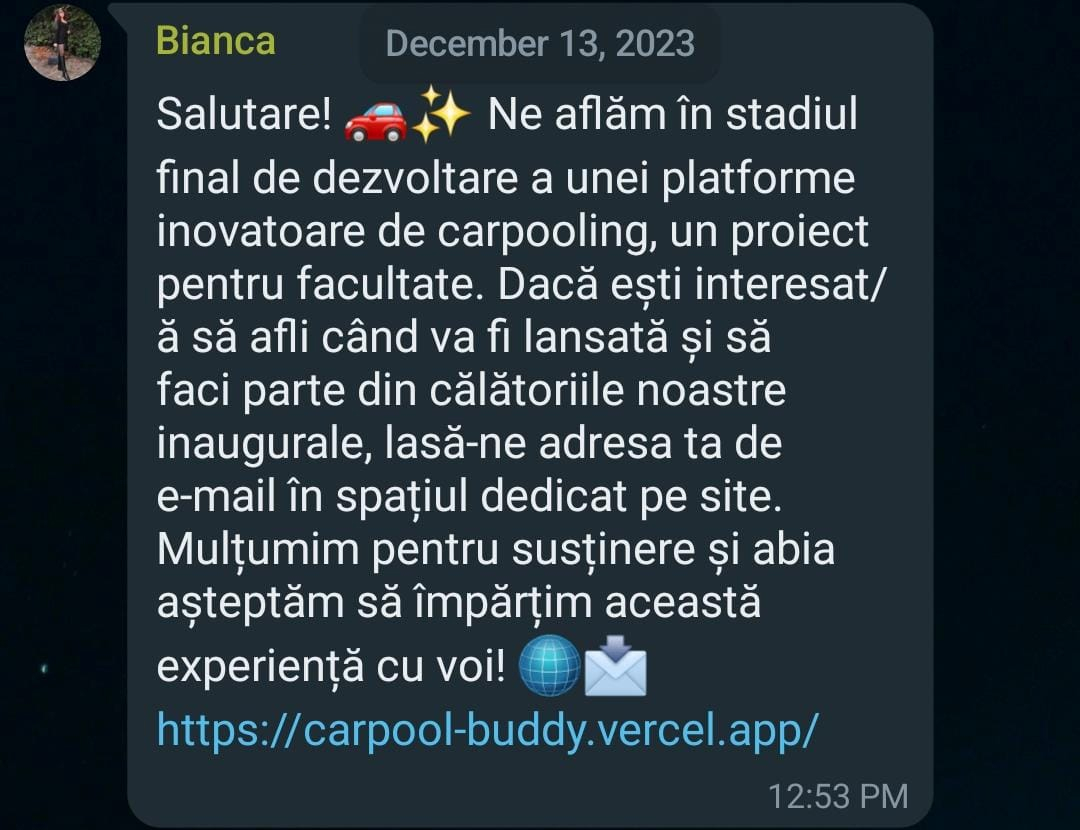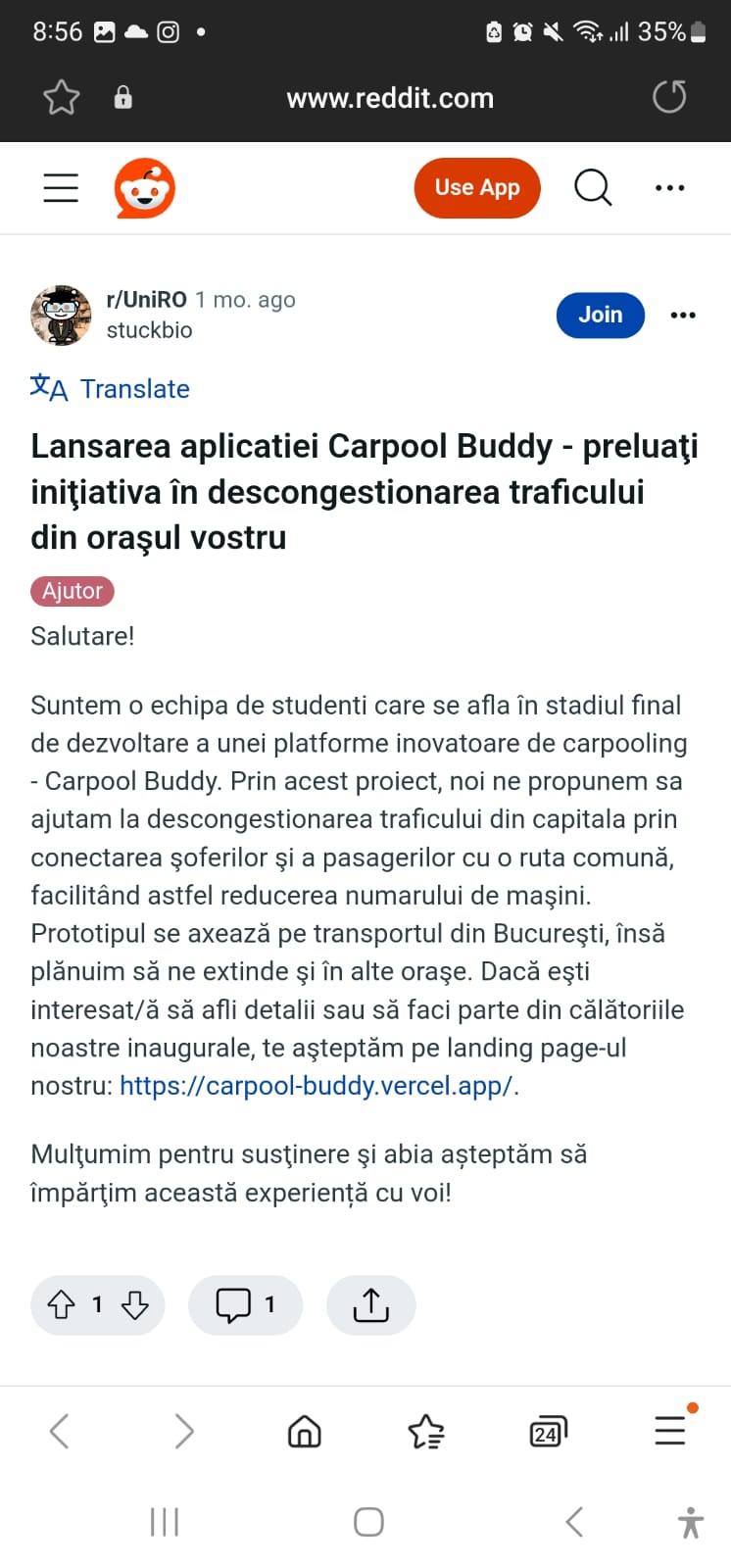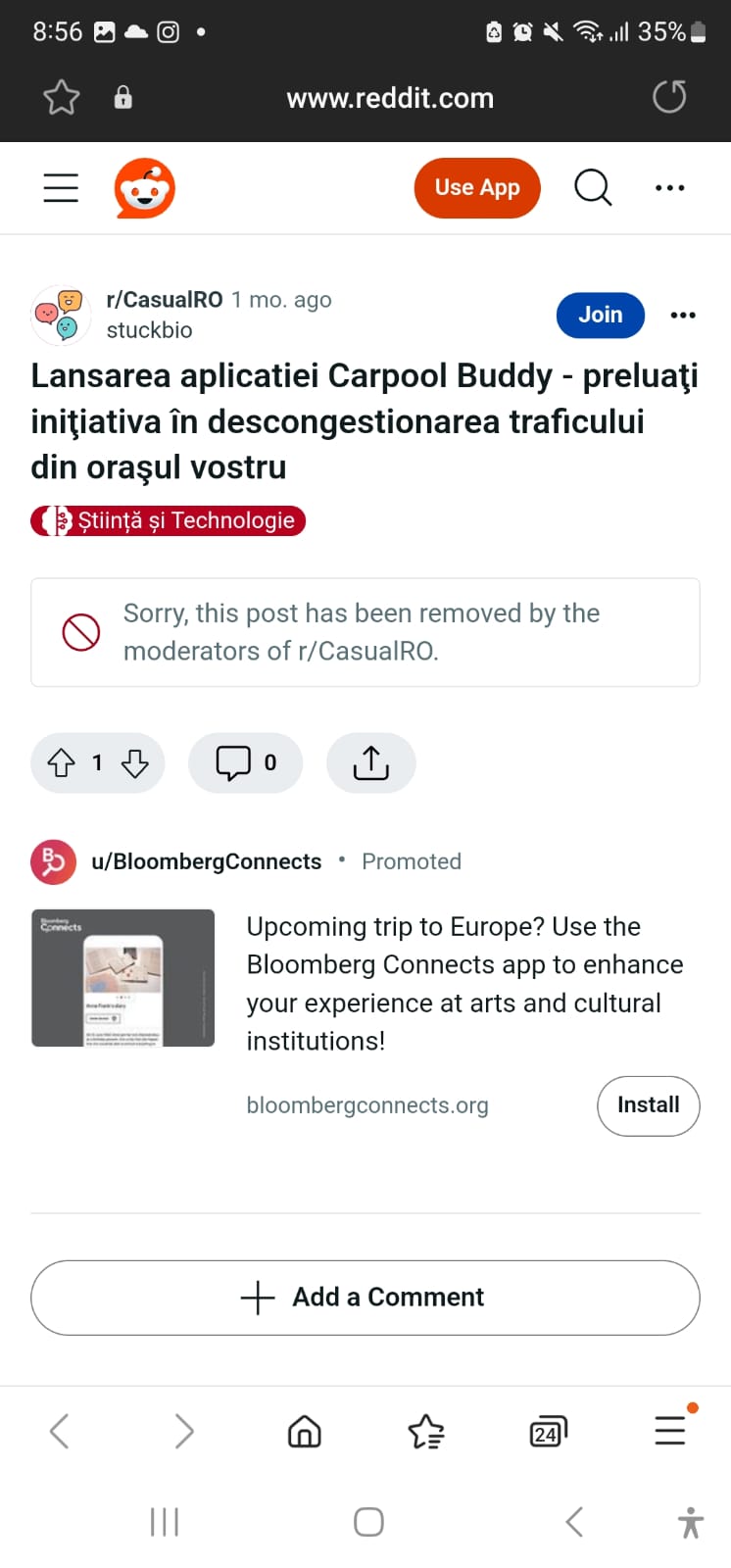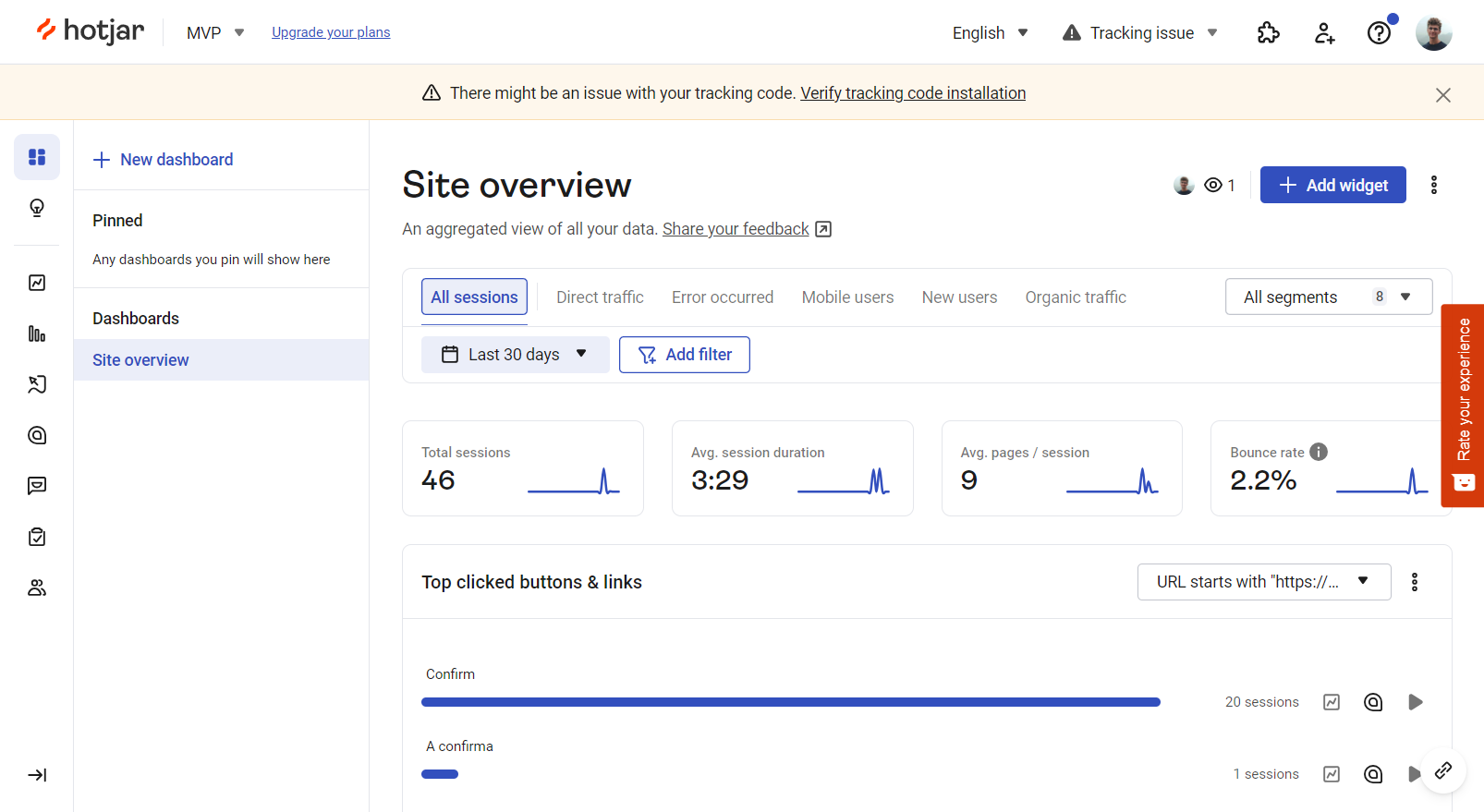Table of Contents
Micuda Andrei
Product Manager
andrei.micuda@stud.acs.upb.ro
Borta Adina
UI Designer & Frontend Engineer
adina_ioana.borta@stud.acs.upb.ro
Voicu Bianca
Backend Engineer
bianca_oana.voicu@stud.acs.upb.ro
Harles Mihai
Technical Lead
serban_mihai.harles@stud.acs.upb.ro
Ciopa Cristian
Marketing Specialist
cristian.ciopa@stud.acs.upb.ro
The problem
Bucharest, faces a growing challenge that plagues its residents daily - urban congestion. The averagte citizen spends about 277 hours each year in traffic. With more cars on the road than ever before, getting from point A to point B can be a nightmare, not to mention the environmental impact of all those vehicles. Urban congestion in Bucharest is reaching critical levels. Rush hours are a nightmare, parking is scarce, and the time and money spent on daily commutes are skyrocketing. Bucharesters waste precious hours stuck in traffic, leading to increased stress and decreased quality of life.
Our solution
Introducing Carpool Buddy, the game-changer in Bucharest's transportation landscape. Our carpooling application is designed to tackle the city's traffic woes and make daily commuting easier. Here's how:
-
Community-Driven Carpooling: Your app connects riders and drivers traveling short distances in Bucharest. Users can easily find others going the same way and share rides, effectively reducing the number of cars on the road.
-
Easy and Convenient: We've designed an intuitive and user-friendly app that makes it simple for commuters to find and book rides, ensuring a seamless experience for everyone.
-
Cost-Efficiency: Carpooling helps users save money on fuel, parking, and maintenance while contributing to a greener environment. The more you share, the more you save!
-
Reduce Traffic and Emissions: By encouraging shared rides, we're actively working to reduce traffic congestion and decrease the carbon footprint in Bucharest. It's a win-win for both commuters and the environment.
Customer Segments
Bucharest has over 2 million residents, and the urban congestion problem affects every one of them. As people look for convenient and sustainable transportation solutions, Carpool Buddy is perfectly positioned to capture a significant share of this growing market.
Segment: Bucharest Commuters
Demographics: Adults aged 25-55, residing in or near Bucharest.
Psychographics: Daily city commuters, environmentally conscious, traffic-weary.
Needs: Efficient daily transportation, cost-effective alternatives, reduced stress during rush hours.
Segment: Students and Young Professionals
Demographics: College students and young adults aged 18-25 living in Bucharest.
Psychographics: Budget-conscious, smartphone-dependent, eco-friendly mindset.
Needs: Affordable rides for campus commutes and work, flexible scheduling, connecting with peers.
Segment: Eco-Minded Urban Dwellers
Demographics: Adults aged 25-50, residing in urban areas of Bucharest.
Psychographics: Strong environmental values, a desire to reduce emissions, minimal car ownership.
Needs: Eco-friendly transportation options, carbon footprint reduction, community engagement.
Segment: Tourists and Weekend Explorers
Demographics: Visitors of all ages exploring Bucharest's tourist attractions.
Psychographics: Adventurous, often unfamiliar with local transportation options.
Needs: Easy access to local transportation, tourist-friendly guides, budget-friendly options.
Competition & our competitive edge
In our competitive landscape, we face formidable rivals in the form of Bolt, Uber, and BlaBlaCar. While these competitors may hold an edge in marketing prowess, Carpool Buddy distinguishes itself with three key advantages:
-
Cost-efficiency and Environmental Responsibility: In contrast to the competition, our application offers a cost-effective and eco-friendly solution. This appeals to price-conscious consumers who also prioritize reducing their carbon footprint.
-
Focus on Shorter Routes and Traffic Mitigation: Our unique emphasis on shorter routes sets us apart, directly addressing the issue of traffic congestion. This strategic focus not only saves time for users but also contributes to more efficient urban transportation.
Key Metrics
- Rides Completed: The total number of rides completed is a fundamental metric, as it directly reflects the demand for the service.
- Average Revenue per User (ARPU): ARPU helps gauge the average spending per passenger. It's calculated by dividing the total revenue by the number of users.
- Customer Retention Rate: This metric shows how well the company is at keeping passengers over time. A high retention rate is often a sign of customer satisfaction.
- Customer Acquisition Cost (CAC): CAC measures the cost of acquiring a new passenger. It includes marketing, advertising, and promotional expenses.
- Driver Acquisition Cost: Similar to CAC, driver acquisition cost measures how much it costs to recruit and onboard new drivers.
- Average Trip Distance: Knowing the average trip distance can help with pricing strategies, fuel efficiency, and driver earnings.
- Cancellation Rate: The percentage of trips that are canceled by either the passenger or driver. A high cancellation rate can indicate a problem in the system.
- Wait Time: The time passengers have to wait for a ride. Reducing wait times can improve customer satisfaction.
- Safety Incidents: Tracking incidents and safety complaints is crucial for maintaining a safe service and ensuring customer trust.
- Rating and Feedback: Monitoring passenger and driver ratings and feedback is essential for maintaining quality and improving service.
- Environmental Impact: Monitoring and reducing the carbon footprint of the business can be important for sustainability and public relations.
Cost Structure
- Mobile App Development: Designing and building the mobile application.
- Back-End Development: Building the server, database, and the logic to handle user data and ride matching.
- Third-party APIs: Integration with mapping, payment processing, and other services.
- Infrastructure Costs:
- Hosting: Costs for app hosting (App Store, Google Play), server infrastructure, and cloud services.
- Database Costs: Expenses for database hosting, scaling, and maintenance.
- Compliance: Ensuring the app complies with legal and regulatory requirements, such as GDPR or data protection laws.
- Maintenance and Updates:
- Ongoing Development: Regular updates, bug fixes, and feature enhancements.
- Server Maintenance: Ensuring the app runs smoothly, including server upgrades and security patches.
- Marketing and User Acquisition:
- Marketing Campaigns: Costs for advertising, social media marketing, and user acquisition.
- User Support: Handling user inquiries and support.
- Operational Costs:
- Administrative Costs: Overhead costs.
- Customer Support: Costs associated with customer service and support teams.
- Payment Processing:
- Payment Gateway Fees: Transaction fees associated with processing payments for rides.
Revenue Streams
Percentage of each fare cost
We will receive a cut for each ride completed. Electric cars will benefit from a smaller fee in order to encourage eco driving.
Corporate Partnerships
Partner with local businesses or corporations to provide carpooling solutions for their employees. Charge a fee for corporate accounts or offer group packages.
This represents a viable option for our product, given the substantial number of people in Bucharest who commute to diverse locations for work or study, residing on the opposite side of the city. With flexible schedules, it's likely that people may not consistently carpool with the same person. This is an idea worth expanding in the near future.
Points system
Following the feedback received during our presentation on January 10, we've taken into consideration the legal requirements associated with revenue streams and their implementation. This imposes certain constraints on our initial idea, which we had not thoroughly examined in this early application stages. Now that we are aware of these legal considerations, we are exploring an alternative option to cater to individuals who may not wish to establish a PFA or obtain a taxi certification. We are considering a points system.
With this proposed system, people contributing as drivers would accumulate in-app points that can be used when they choose to be passengers in the future. We are thinking the potential evolution of this system into a cryptocurrency solution, creating our own digital currency for both in-app and external use. Aligning with our marketing approach and strategy (eco-friendliness), we could form partnerships with businesses sharing similar principles. These collaborations would enable users to make purchases using our cryptocurrency, fostering a community that values sustainable practices.
Validation 1
How did we identify the problem?
As university students and full-time employees, all team members in Bucharest deal with traffic issues to some extent. For instance, Andrei spends a minimum of 2 hours commuting between university and home via the metro.
What we thought was the solution?
We identified car pooling as a possible solution to this issue. The benefits of this solution are twofold:
- Ease traffic congestion by reducing the number of 1-person cars.
- Provide a middleground solution between public transport and ride-hailing services.
Plan for customer discovery
We focused on 2 main commuter segments:
- Corporate employees
- University students
We selected these two segments as they belong to the category of people that spend a considerable amount of time with their commute. Another factor was the ease of reaching out to people belonging to these groups.
The customer validation process
We reached out to various acquaintances that we knew are living on the outskirts of Bucharest as well, as well as individuals who frequently traverse the urban expanse.
The validation process consisted of a multi-way approach:
- face-to-face interviews
- online form
- one-on-one online communication
Questions asked
All questions posed were derived from the online form (link). The proof to all the interviews can be found on Google Drive.
Findings
Face-to-face interview
Case #1
- Age Group: 25-49
- Works full-time hybrid
- Discussion summary: He goes around town 2-3 times a week, mostly by metro. It takes him about half an hour to reach the destinations. He considers that walking is better than being in a crowded metro. He shared a car before and is willing to do it again.
One-on-one online communication
Case #2
- Age Group: 18-25
- Student, full-time employee, only works from home
- Discussion summary: As he does not need to commute back and forth from work, he only commutes 5-6 times a week. Additionaly, he mostly uses public transport (metro, tram) and only used Uber/Bolt when in a rush or late at night.
Case #3
- Age Group: 18-25
- Works full-time, on-site
- Discussion summary: He commutes 4 days by metro and 1 day by car. Outside of work commute, he mostly uses his car for other activities (especially if no metro station is near). He frequently car pools with friends (as the driver).
Case #4
- Age Group: 18-25
- Works full-time, hybrid
- Discussion summary: She goes around town 2-4 times a week, mostly by metro or Uber. It takes her about one hour to reach the destinations. She considers the traffic as being dangerous and chaotic. She shared a car before and is willing to do it again.
Case #5
- Age Group: 18-25
- Works full-time, on site, goes to university on weekends
- Discussion summary: She goes around town 5-6 times a week, mostly by car or metro. It takes her 30 minutes to an hour to reach the destinations. When going to work, she is picked up by one of her co-workers. So she shares a car every working day.
Case #6
- Age Group: 25-49
- Employed, works full-time, from home and 2-5 days per month on site
- Discussion summary: We kicked off our discussion with an interesting point: she primarily works from home, with only 2-5 days a month requiring a 6-minute walk to the office. Curious about her previous employment, I inquired about the reasons for her job change. Although it wasn't her primary reason, she mentioned that the extended commute to her former workplace played a role. This insight shed light on her priorities, as she brought it up unprompted. I then asked about her use of Bolt, and she revealed that she turns to Bolt when she's in a hurry or when she wants to avoid switching subway lines. To conclude, I asked a more direct question: "Would you consider switching from Bolt to share a ride with someone going to a similar destination, even if it meant a 5-10 minute walk?" She expressed willingness to accept a 5-minute walk but drew the line at 10 minutes.
Case #7
- Age Group: 25-49
- Employed, works full-time, 3 days from home and 2 days on site
- Discussion summary: He commutes almost exclusively by metro. Only uses Uber/Bolt for emergencies or when in a rush. He says he would be open to car pooling if it means saving time during commutes and if the cost is not too high.
Online Form




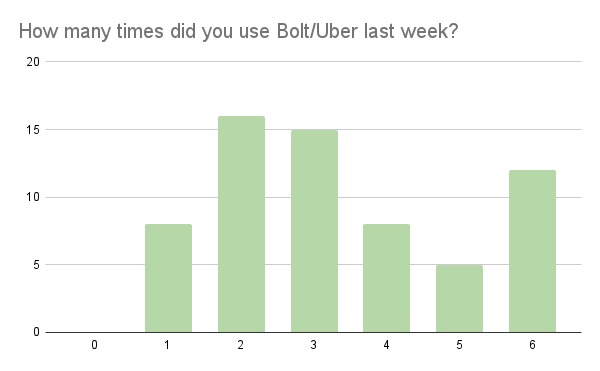
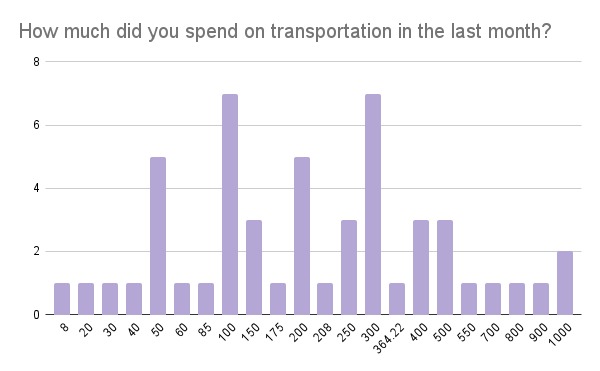
Main problems during commutes
- 40 out of 52 respondents said that the main problem is the congested traffic.
- 13 out of 52 respondents highlighted problems related to the overcrowding of buses and irregular public transport schedules.
Alternatives to public transport and cars
- 13 out of 52 respondents used public trasport
- 16 out of 52 respondents used a bike/scooter
- 13 out of 52 respondents tried walking
- 4 out of 52 respondents tried scheduling their commutes around rush hours
Willingness to walk short distances
- Most likely: 38 out of 52 respondents said that they last chose to walk a short distance within the past week
- Likely: 7 out of 52 respondents said that they last chose to walk a short distance within the past month
- Unlikely: 6 out of 52 respondents said that they last chose to walk a short distance more than a month ago
Past car pooling experience
38 out of 52 respondents said that they previously shared a car ride with an acquaintances, even if not going to the same destination
Willingness to car pool in the future
- Most likely: 24 out of 52 respondents rated their willingness as 5/5
- Likely: 17 out of 52 respondents rated their willingness as 3/5 or 4/5
- Unlikely: 11 out of 52 respondents rated their willingness as 1/5 or 2/5
Validation 1 - Conclusions
These insights have given us more confidence in our solution's ability to address real-life problems. Additionally, the positive feedback we've received has us ready to move forward with testing our solution in the market.
Wireframe
Passenger flow
Driver flow
Landing Page
Link.
Analytics
Interviews
-
Interview 1
Age Group: 25-49
Works full-time, hybrid
Discussion summary: She goes around town 5-7 times a week, mostly by car or Uber. It takes her 30 minutes to an hour to reach the destinations. She spent around 450 lei on transport in the last month. When going to work, she drives to work. She would share a ride.
-
Interview 2
Age Group: 18-25
Student
Discussion summary: She goes to university 4 times a week. She usually rides a bus, but she also chooses Bolt or Uber when she is far away from her destination. She shared a ride before with her friends or friends of friends.
-
Interview 3
Age Group: 18-25
Works full time
Discussion summary: He uses ride sharing at least once a week. Uses the metro every other day. Spends around 300 RON a month on transport, most of it being spent on car sharing. He regularly walks short distances when possible (~15 minutes). He previously shared a ride with peers. He is willing to car pool with stranges as long as he feels safe.
User stories
- As a daily commuter in Bucharest, I want to easily find and connect with others traveling in the same direction, so I can share rides and reduce my commute time.
- As a driver with a car in Bucharest, I want a convenient platform to offer rides to fellow commuters, helping me save on fuel costs and contribute to easing traffic congestion.
- As a cost-conscious user in Bucharest, I want to save money on transportation by sharing rides with others, reducing expenses on fuel, parking, and maintenance.
- As an environmentally conscious user in Bucharest, I want to choose eco-friendly options like electric cars and be rewarded with reduced fees for contributing to a greener environment.
- As a corporate employee in Bucharest, I want to explore carpooling solutions for my daily commute, either as a driver or passenger, to simplify my transportation and potentially save costs.
- As a university student in Bucharest, I want a reliable and affordable means of commuting, and carpooling seems like a viable option to share rides with peers.
User cases
-
Daily Commute Case:
User Type: Daily commuter
Scenario: Sandra commutes from the outskirts to her workplace every day. She uses the Carpool Buddy app to find a fellow commuter heading the same way, reducing her travel time and costs.
-
Eco-Friendly Commute Case:
User Type: Environmentally conscious user
Scenario: Alex owns an electric car and prefers eco-friendly transportation. Carpool Buddy's reduced fees for electric cars encourage him to offer rides and contribute to a greener environment.
-
Corporate Partnership Case:
User Type: Corporate employee
Scenario: Radu works for a local business that partners with Carpool Buddy. The company encourages employees to use the app for commuting, benefiting from group packages and reducing the number of individual cars arriving at the office.
-
University Student Case:
User Type: University student
Scenario: Elena, a student, finds it challenging to afford daily transportation. She discovers Carpool Buddy, connects with fellow students, and shares rides to and from the university, making her commute more affordable.
-
Casual Carpooler Case:
User Type: Infrequent carpooler
Scenario: Andrei occasionally commutes by car but prefers not to drive alone. He uses Carpool Buddy to find someone heading in the same direction for specific trips, optimizing his travel plans.
User Persona

About
Adrian, a student who works full time in Bucharest, seamlessly balancing corporate IT work with academic pursuits. Fueled by a passion for all things tech and by his daily black coffee (single origin), he is committed to sustainability, integrating eco-friendly practices into his professional and daily life, striving for a harmonious blend of technology and a greener future.

Goals
-
Commute daily from Ilfov to Bucharest effectively.
-
Achieve a harmonious balance between personal life, work, and studies.
-
Take strides toward a more sustainable lifestyle.

Frustrations
-
The extended duration spent commuting by bus from home to work or school, involving factors such as traffic, bus changes, and delays.
-
The congestion and lack of parking spots resulting from the high volume of cars in Bucharest.
-
The monthly expenditure on transportation, covering Bolt, Uber, and gas, amounting to 1000 RON.

Profile
Lead Generation
We used the landing page to collect emails from people.

We posted on a few platforms to get people to see our landing page.
- Whatsapp: We sent messages on students groups.
- Reddit: We have faced difficulties on Reddit because we are not active members of this community and our posts were seen as spam.
- Facebook: We posted on facebook groups. This was also problematic at first, because we needed to be accepted by the group admin.
Market research
Size of Target Market:
- Bucharest has over 1.7 million residents.
- Our target market includes daily commuters, students, eco-minded urban dwellers, and tourists/weekend explorers. Assuming a conservative estimate of 20% of the population being potential users.
Approximate Number of Players/Competitors:
- Major competitors include Bolt, Uber, and BlaBlaCar.
Competition:
- Uber and Bolt do have a significant market share in ride-hailing. While traditional ride-hailing services have played a significant role in providing convenient transportation solutions, we believe there's an opportunity to contribute to the community and address traffic congestion more efficiently. Carpool Buddy aims to enhance the transportation landscape in Bucharest by promoting shared rides. Our community-driven approach connects riders traveling in the same direction, reducing the number of individual vehicles on the road. We believe that by encouraging collaboration and shared commuting experiences, we can collectively work towards alleviating traffic congestion and creating a more sustainable urban environment.
- While BlaBlaCar has established itself with a notable presence in long-distance carpooling, Carpool Buddy takes a unique approach by focusing specifically on short distances. Our platform is tailored to address the immediate commuting needs within Bucharest, offering a seamless solution for daily city travel.
Estimate Your Potential Market Share:
Year 1
Estimated Market Share:
- Target: 1% of the potential user base.
- Potential User Base: Assuming 20% of Bucharest's population, the target is to capture 4,000 users.
Total Market Value and Our Market Share:
- Assuming an average annual spending on transportation of 400 euros per person.
- Total Market Value: 80 million euros (400,000 people * 400 euros).
- Our 1% Market Share: 0.8 million euros (1% of 80 million euros).
Year 2
Estimated Market Share:
- Aim for gradual growth.
- Target: 2-3% of the potential user base.
- Potential User Base: 8,000 to 12,000 users.
Total Market Value and Our Market Share:
- Total Market Value remains at 80 million euros.
- Our 2% Market Share: 1.6 million euros.
- Our 3% Market Share: 2.4 million euros.
Year 3
Estimated Market Share:
- With effective marketing and positive user experiences, a more ambitious target.
- Target: 5-7% of the potential user base.
- Potential User Base: 20,000 to 28,000 users.
Total Market Value and Our Market Share:
- Total Market Value remains at 80 million euros.
- Our 5% Market Share: 4 million euros.
- Our 7% Market Share: 5.6 million euros.
Year 4
Estimated Market Share:
- Continue gradual growth.
- Target: 8-10% of the potential user base.
- Potential User Base: 32,000 to 40,000 users.
Total Market Value and Our Market Share:
- Total Market Value remains at 80 million euros.
- Our 8% Market Share: 6.4 million euros.
- Our 10% Market Share: 8 million euros.
Year 5
Estimated Market Share:
- Continue growth.
- Target: 10-12% of the potential user base.
- Potential User Base: 40,000 to 48,000 users.
Total Market Value and Our Market Share:
- Total Market Value remains at 80 million euros.
- Our 10% Market Share: 8 million euros.
- Our 12% Market Share: 9.6 million euros.
MVP
The MVP can be tested here.
Our MVP is a basic version of a carpooling app, where users in Bucharest can select a pickup location and destination. The MVP is designed to test user interaction without implementing the full backend functionality. Initially, after attempting to find a ride, the app informs users that no cars are available nearby. This approach allows our team to gauge interest and willingness to use the service without the need for extensive coding and development.
Justification
- Value to Users: The MVP allows potential customers to interact with the core feature of your proposed service (selecting a pickup, destination and the distance they are willing to walk). This interaction is crucial for understanding whether users find the process intuitive and if they see potential value in the service.
- Future Benefit Demonstration: By enabling users to interact with the primary functionality, you're setting the stage for what the complete app would offer. This helps in retaining early adopters who can envision the final product.
- Feedback Loop: The user interactions and responses to the 'no cars available' message will provide valuable feedback. For example, if a user went back to the search screen and modified some parameters, this behaviour could indicate a user that really wants a solution for their problem. This feedback is essential for understanding user expectations and refining the app's functionality in future development stages.
MVP Distribution and Analysis Plan
We plan to distribute the MVP by emailing everyone who subscribed to receive updates via our landing page. This approach targets users who have already shown interest in such a service, making them ideal candidates for initial testing.
- Traffic Analysis: After distribution, analyze the traffic and user interaction data. Key metrics might include the number of users who attempted to find a ride, how many times they tried, and any feedback they provided.
- Improvement and Scaling: Use the collected data to refine the app. Determine what worked well and what needs improvement. This will guide the development of a more complete version of the app that includes actual carpooling capabilities.










